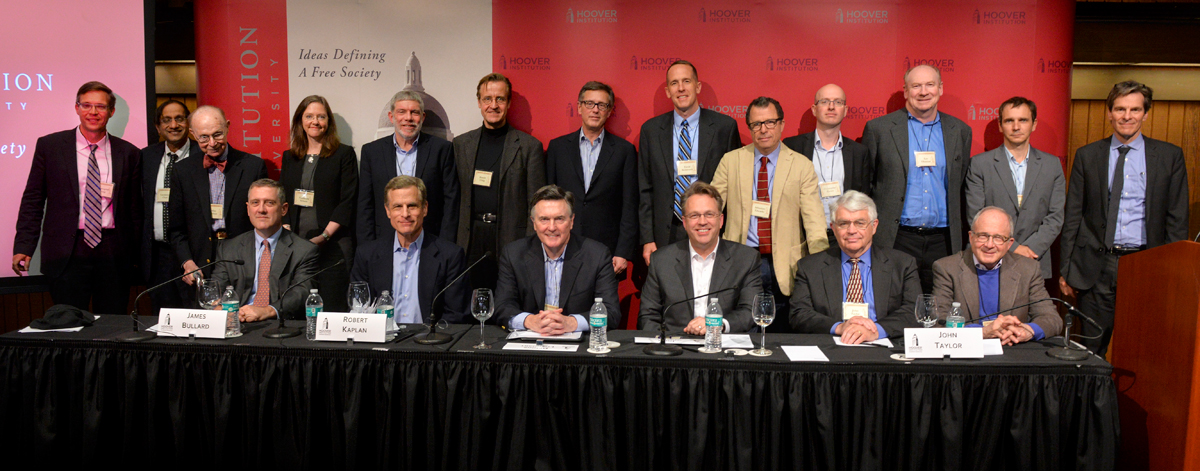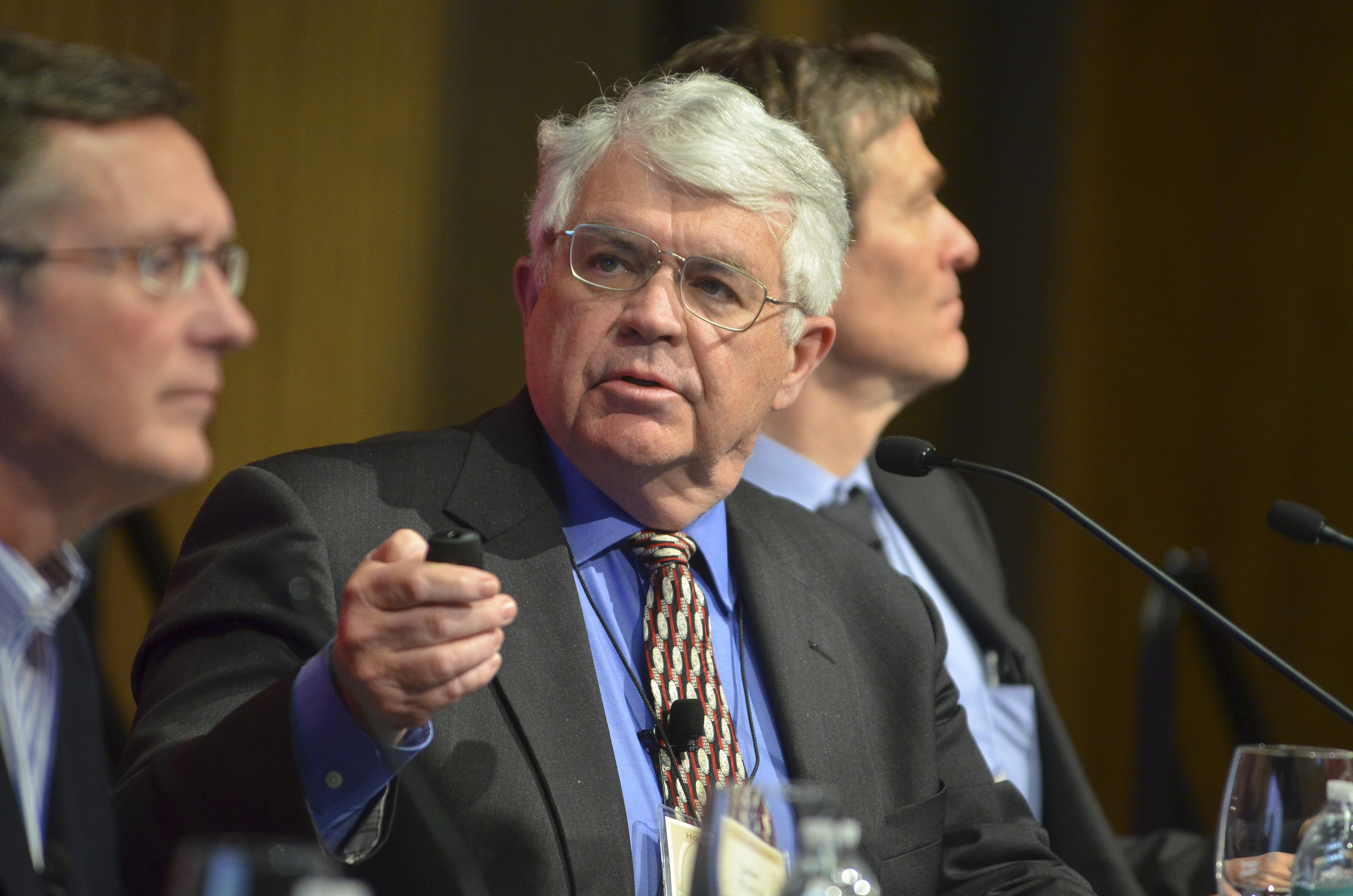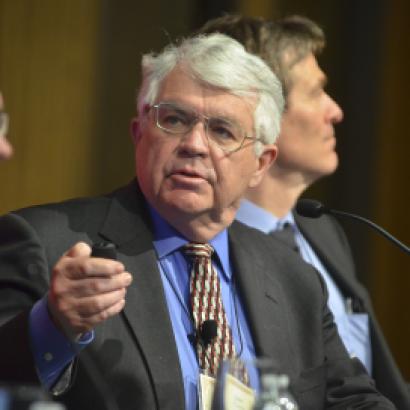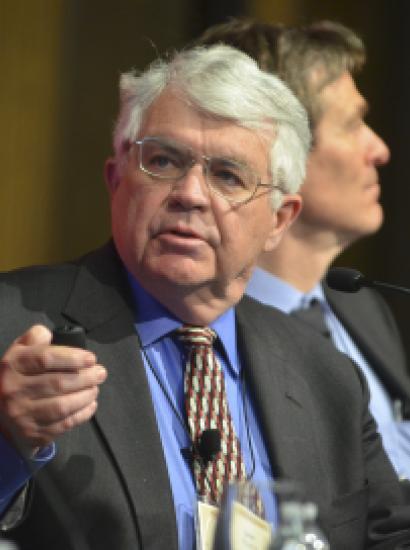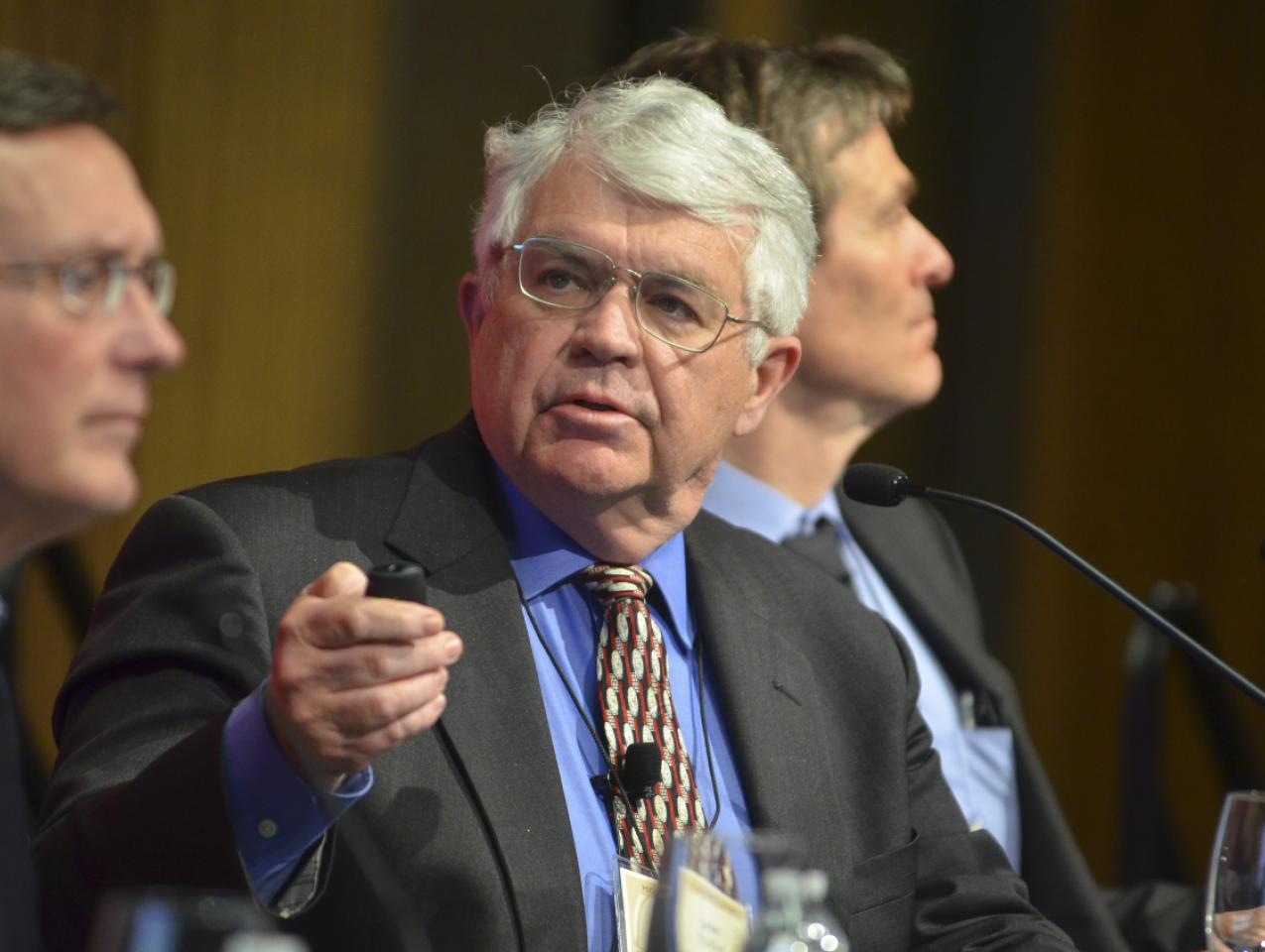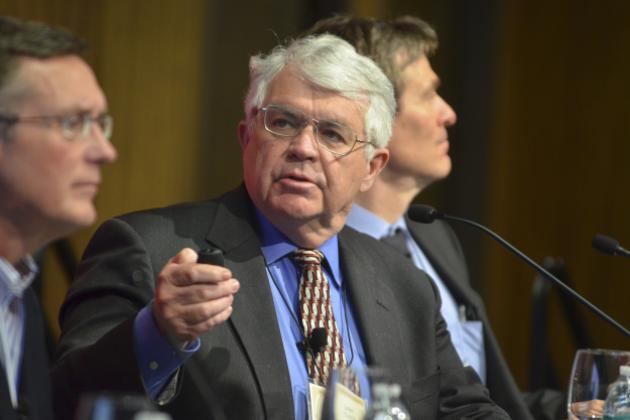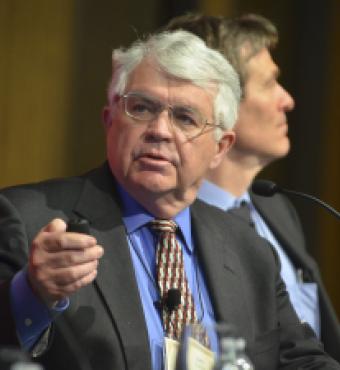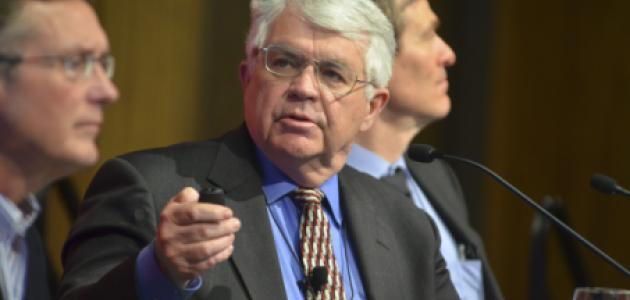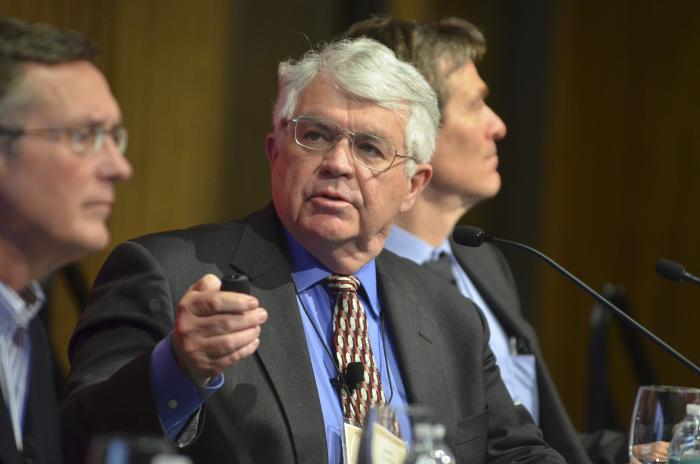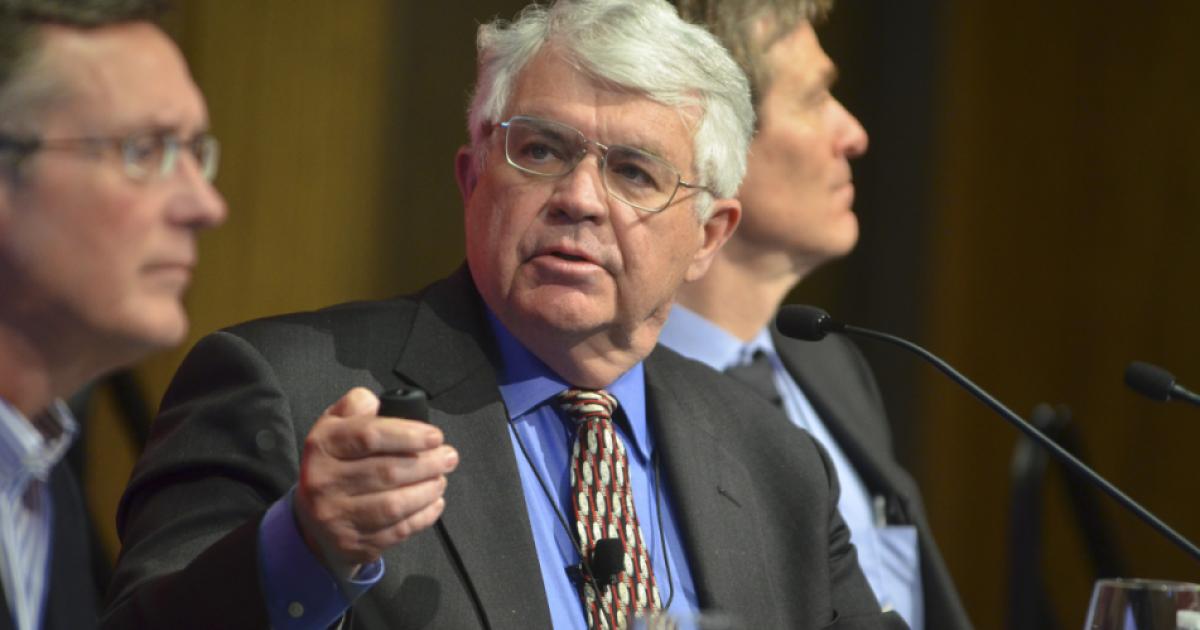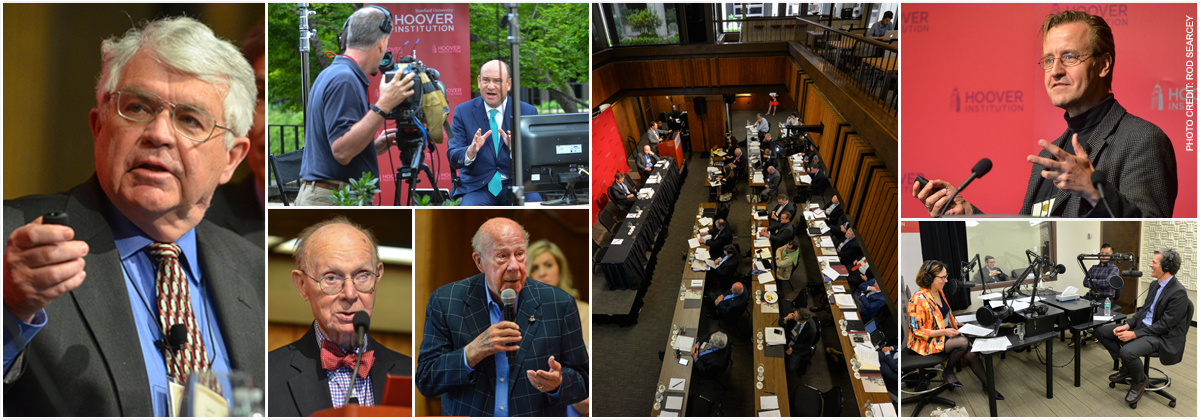
Since 2014, John B. Taylor, the George P. Shultz Senior Fellow at the Hoover Institution, has hosted annual conferences of leading monetary policy makers, financial authorities, and academic economists to discuss the unprecedented post-2008 economic climate and help set the tone for future monetary reform. This year’s forum, titled “International Monetary Stability: Past, Present, and Future,” drew an impressive list of participants including four Federal Reserve Bank presidents and numerous representatives from the Federal Reserve System, academia, the financial sector, and business media. Five presentations of monetary research projects and two panel discussions focused on the deepening links of international monetary policy regimes, exchange-rate volatility, international capital flows, and next steps for central banks as they assess the results of unconventional monetary interventions.
In the first presentation of the conference, Sebastian Edwards of the University of California at Los Angeles and the National Bureau of Economic Research presented a paper titled “Monetary Policy Independence under Flexible Exchange Rates.” The paper demonstrates the Federal Reserve’s monetary policy spillover into emerging markets in Latin America and East Asia, raising questions about the ability of so-called EMs to exercise monetary independence and resist contamination from destabilizing international monetary forces.
David Beckworth of George Mason University’s Mercatus Center delivered the second paper, coauthored with Christopher Crowe of Capula Investment Management, titled “The International Impact of the Fed When the US is Banker to the World.” Beckworth and Capula examine the unique roles of the United States as the principal source of low-risk, liquid financial assets and as a superpower that sets the global monetary tone. They argue that the interaction of these two roles has caused Fed policy to simultaneously increase demand and restrict supply of safe financial assets, leading to a global shortage.
Varadarajan Chari, former senior research officer and economic advisor at the Federal Reserve Bank of Minneapolis and professor of economics at the University of Minnesota, presented the third paper of the conference, titled “A Journey Down the Slippery Slope to the European Crisis: The Theorist’s Guide.” The paper, coauthored with Patrick Kehoe of the University of Minnesota and Stanford’s Graduate School of Business, explores monetary unions as potential slippery slopes of bad incentives, manifested in the European Union as mutually reinforcing cycles of financial bailouts and moral hazard.
Pierre-Olivier Gourinchas of the University of California at Berkeley delivered “Global Imbalances and Currency Wars at the Zero-Lower-Bound,” coauthored with Emmanuel Farhi of Harvard University and Richard J. Caballero of the Massachusetts Institute of Technology. The paper presents a new model explaining the misalignment of supply and demand in the safe financial asset market and the economic effect of this imbalance when nominal interest rates are persistently near zero. Leading the discussion of the project, Hoover fellow John P. Cochrane outlined a detailed counterargument to the paper’s conclusions but praised the authors for capturing the overwhelmingly complex assumptions of contemporary monetary policy in a testable model.
Michael Bordo, professor of economics and director of the Center for Monetary and Financial History at Rutgers University and distinguished visiting fellow at the Hoover Institution, along with Catherine Schenk of the University of Glasgow, coauthored and presented the final paper of the conference, “Monetary Policy Cooperation and Coordination: A Historical Perspective on the Importance of Rules.” The paper examines the history and effectiveness of international monetary policy interaction from the classical gold standard to the post-2008 financial system, showing how cooperative monetary agreements have outperformed their more formal counterparts and how rules-based monetary arrangements can negate the need for policy coordination.
The conference also featured two panel discussions on monetary reform, beginning with John Taylor and George Shultz, the Thomas W. and Susan B. Ford Distinguished Fellow at the Hoover Institution, along with Richard Clarida of Columbia University, on the topic of “Rules-Based International Monetary Reform.” Taylor discussed the growing consensus that the decade-long absence of rules-based monetary policy has been a serious drag on economic performance and stability. Taylor also outlined a next step for restoring a rules-based monetary order by promoting adherence to rules by individual central banks. The proposal calls for central banks to commit to and report on a clear monetary strategy, restoring transparency and accountability without compromising independence. Clarida presented a more restrained view, arguing that the domestic costs of international monetary cooperation significantly diminish net benefits. Shultz took a historical approach to the topic, sharing stories and lessons from his time as director of the Office of Management and Budget in the 1970s, including his resigning the office to protest President Nixon’s wage and price controls.
The second panel, which concluded the conference, featured four Federal Reserve Bank Presidents: James Bullard, president of the Federal Reserve Bank of St. Louis; Robert Kaplan, president of the Federal Reserve Bank of Dallas; Dennis Lockhart, president of the Federal Reserve Bank of Atlanta; and John Williams, president of the Federal Reserve Bank of San Francisco. The panel covered current trends in economic performance and potential Fed responses, the evolving presence of central banks in the economy vis-à-vis unconventional monetary tools, and central bank transparency. In addition to insights about the data and analyses influencing current Fed policy, the panel offered a window into the outlook of Federal Reserve policy makers. Dennis Lockhart highlighted the uncertainty associated with new central bank operating frameworks, stating that “all major central banks are grappling with the question of where is this going—where exactly is this headed?” Robert Kaplan stressed the limits of monetary policy in improving economic performance, stating “I hope over the years we will broaden the conversation about what government should do—not just the Fed . . . we have one blunt instrument—or several—but I think there has to be a broad array of tools if we’re going to reach our potential.”
Despite global economic challenges, the innovative material presented and discussed at this year’s conference signaled promising steps forward in monetary theory and policy analysis. In reflecting on the event, John Taylor stated, “As with proposals coming out of past Hoover conferences—on monetary policy rules and central bank oversights—the reforms that emerged from this conference will affect the policy debate and actions in the years ahead.”
Based on the enthusiasm of conference participants, such ideas for reform will be welcomed in the larger monetary policy community.
View the event page for the 2016 International Monetary Stability conference.
